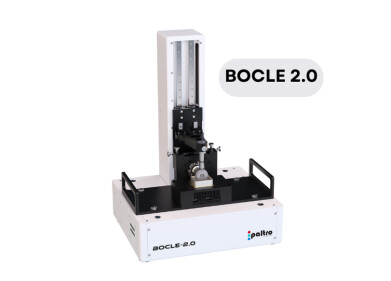Lubricant analysis
What Are the Different Types of Lubricants?
Feb 16 2022
All mechanical lubricants share the same goal of increasing efficiency, minimising wear and preventing unplanned downtime. They achieve this by forming a protective layer between surfaces and eliminating direct metal-to-metal contact.
Different types of lubricants are used for different applications and a good understanding of what’s available is key to choosing the right product. Find out more in our complete guide to different types of mechanical lubricants below:
Oil-based lubricants
Oil-based lubricants are used for a wide range of applications, helping to minimise friction between moving parts and maintain mechanical efficiency. An oil-based protective film can also work to absorb friction-generated heat and act as a coolant. Oil-based lubricants are available in different viscosities, with lower weight numbers indicating a thinner product.
Different base oils are used to manufacture oil-based lubricants. Many have mineral oil bases though synthetic oil and vegetable oil bases are also widely used. Minimal resistance makes oil-based lubricants a good option for engines of all sizes. It’s common to blend additives with oil-based lubricants to improve resistance to corrosion and oxidisation.
While oil-based lubricants can be highly effective, they’re detrimental when used on dirty machinery and components. Oil will quickly absorb contaminants and create friction, often causing both localised and widespread damage.
Grease-based lubricants
Grease-based lubricants are tough and long-lasting, making them ideal for industrial applications. For example, US-based petroleum company ExxonMobil specialised in industrial lubricants for the energy sector and manufactured several grease-based products. Synthetic grease is often preferred over petroleum-based grease for heavy-duty equipment. This includes gears, bearings, axles and other machinery that operates at high temperatures, torque and shear stress.
Penetrating lubricants
Penetrating lubricants aren’t designed for long-term use but can be extremely useful when dealing with rust, debris and other contaminants. These low viscosity fluids infiltrate minute cracks and provide lubrication where other products fail. WD-40 is one of the most widely used penetrating lubricants and is a mainstay in garages around the world. Oil refineries, drilling rigs, industrial factories and other heavy-duty operators tend to rely on more specialised products.
Dry lubricants
When oil and grease-based products aren’t an option, dry lubricants step up. Made up of tiny particles, dry lubricants are slick and smooth, without an oily residue. Often manufactured with graphite and molybdenum disulfide, dry lubricants are usually blended with a solvent such as water or alcohol. They’re sprayed onto a surface, where the solvent evaporates and leaves behind an ultra-thin layer of dry lubricant.
Performance is critical when it comes to lubricants and frequent testing is necessary to monitor degradation caused by contaminations such as water and particles. Experts from Koehler Instrument Company introduce the latest technologies being used to test greases and measure physical and chemical degradation in ‘Design and Development of an Innovative Instrument to Measure Consistency and Useful Life in Greases’.
Digital Edition
PIN 26.1 Feb/Mar 2025
March 2025
Analytical Instrumentation - Elemental Analysis for Quality and Process Control at Refineries, for Lubricants and Wear Metals in Engine Oils - Synthetic Lubricants: New Developments - Scaling...
View all digital editions
Events
Apr 08 2025 Birmingham, UK
Apr 08 2025 Kielce, Poland
Apr 08 2025 Ravenna, Italy
Apr 08 2025 Southampton, UK
Apr 08 2025 London, UK



















